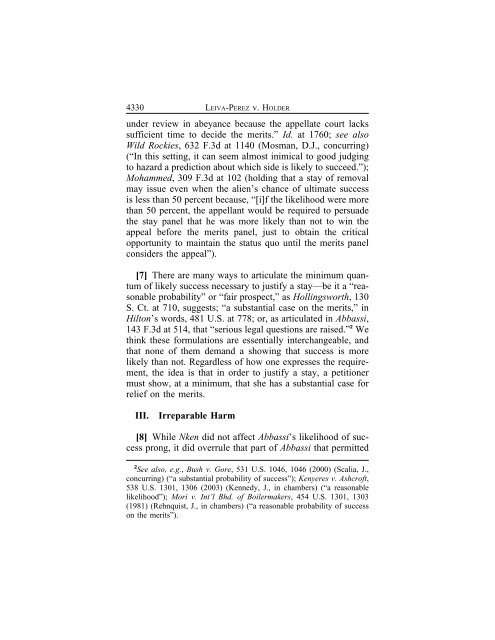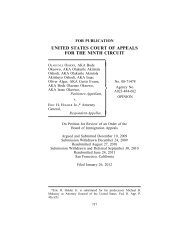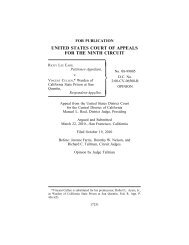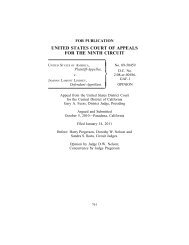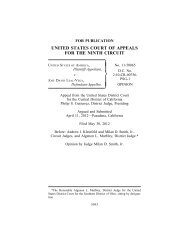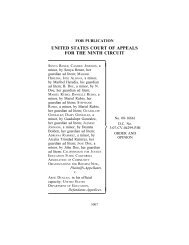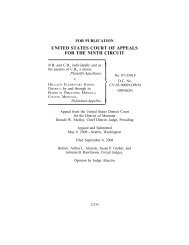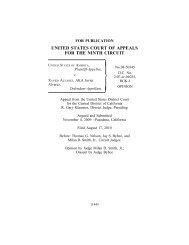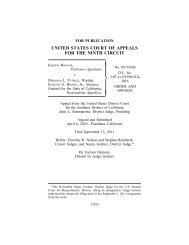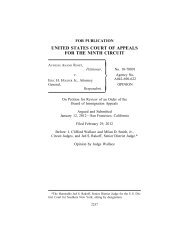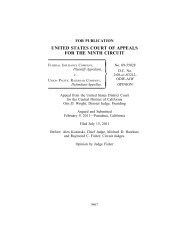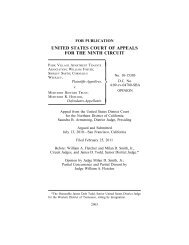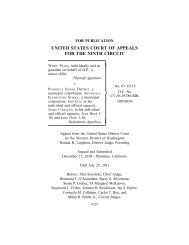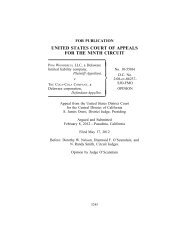william leiva-perez v. eric holder, jr. - Ninth Circuit Court of Appeals
william leiva-perez v. eric holder, jr. - Ninth Circuit Court of Appeals
william leiva-perez v. eric holder, jr. - Ninth Circuit Court of Appeals
Create successful ePaper yourself
Turn your PDF publications into a flip-book with our unique Google optimized e-Paper software.
4330 LEIVA-PEREZ v. HOLDER<br />
under review in abeyance because the appellate court lacks<br />
sufficient time to decide the merits.” Id. at 1760; see also<br />
Wild Rockies, 632 F.3d at 1140 (Mosman, D.J., concurring)<br />
(“In this setting, it can seem almost inimical to good judging<br />
to hazard a prediction about which side is likely to succeed.”);<br />
Mohammed, 309 F.3d at 102 (holding that a stay <strong>of</strong> removal<br />
may issue even when the alien’s chance <strong>of</strong> ultimate success<br />
is less than 50 percent because, “[i]f the likelihood were more<br />
than 50 percent, the appellant would be required to persuade<br />
the stay panel that he was more likely than not to win the<br />
appeal before the merits panel, just to obtain the critical<br />
opportunity to maintain the status quo until the merits panel<br />
considers the appeal”).<br />
[7] There are many ways to articulate the minimum quantum<br />
<strong>of</strong> likely success necessary to justify a stay—be it a “reasonable<br />
probability” or “fair prospect,” as Hollingsworth, 130<br />
S. Ct. at 710, suggests; “a substantial case on the merits,” in<br />
Hilton’s words, 481 U.S. at 778; or, as articulated in Abbassi,<br />
143 F.3d at 514, that “serious legal questions are raised.” 2 We<br />
think these formulations are essentially interchangeable, and<br />
that none <strong>of</strong> them demand a showing that success is more<br />
likely than not. Regardless <strong>of</strong> how one expresses the requirement,<br />
the idea is that in order to justify a stay, a petitioner<br />
must show, at a minimum, that she has a substantial case for<br />
relief on the merits.<br />
III. Irreparable Harm<br />
[8] While Nken did not affect Abbassi’s likelihood <strong>of</strong> success<br />
prong, it did overrule that part <strong>of</strong> Abbassi that permitted<br />
2 See also, e.g., Bush v. Gore, 531 U.S. 1046, 1046 (2000) (Scalia, J.,<br />
concurring) (“a substantial probability <strong>of</strong> success”); Kenyeres v. Ashcr<strong>of</strong>t,<br />
538 U.S. 1301, 1306 (2003) (Kennedy, J., in chambers) (“a reasonable<br />
likelihood”); Mori v. Int’l Bhd. <strong>of</strong> Boilermakers, 454 U.S. 1301, 1303<br />
(1981) (Rehnquist, J., in chambers) (“a reasonable probability <strong>of</strong> success<br />
on the merits”).


